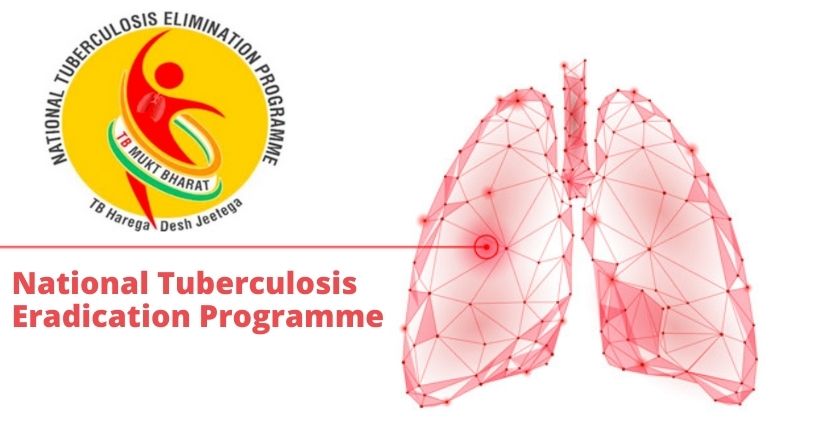Since the early 2000s, we have seen Amitabh Bachchan, the stalwart superstar, actively endorsing advertisements by our Health Ministry for raising awareness towards Tuberculosis. Being a survivor of the deadly disease himself, he has been advocating for better awareness to detect TB early to enable citizens to receive adequate treatment and has been viewed on televisions and heard on radios in all households across rural and urban India for years. It won’t be wrong to say that he has been able to create a tremendous impact on the minds of people due to his immense popularity and we as a public associate him with the campaign and his picture in various roles pop up in our heads when we hear about TB.
Despite the decades-long fight against TB, our nation is yet miles away from succeeding in this endeavor, as we see the maximum number of incidences of TB being reported from our nation, at almost 27 lakhs and around 4.3 lakh deaths being reported annually. TB is one of the major causes of death in India and our government has waged a war against it.
Table of Contents
National Tuberculosis Eradication Programme
Soon after Independence, India established various regional and national TB control programs, but the efforts saw serious results only after the Revised National TB Control Programme of 1997. The program uses the Directly Observed Treatment Short Course (DOTS) strategy recommended by the World Health Organisation. Since then, we have come a long way with our commitments to fighting the deadly disease.
Our Prime Minister, Sh. Narendra Modi, in 2018, declared that India will strive to eradicate TB by 2025, which is 5 years earlier than the Global Target set under the aegis of the United Nations. A Revised National TB Eradication Programme has been set up with various new provisions to receive active participation from States, Districts, and other institutes of Local Governance.
The NTEP incorporates various mini-programs under it and works closely with other Ministries and Departments. Various schemes such as Nikshay Poshak Yojana, providing Rs. 500 per month for a nutritious diet, Nikshay Jan Aushadhi, providing drugs/medicines at affordable costs, and other Direct Benefit Transfer plans have been performing closely with NTEP. Healthcare facilities are stressing upon better and regular checkups to diagnose and treat at the right times, and for this, private players in the healthcare sector have been brought in close association to ensure minimal under-reporting and better treatment.
What are the states doing?
The Ministry of Health and Family Welfare releases an annual report on India’s efforts to eradicate TB. On March 24, World TB Day, the Indian states performing well against TB in their respective areas, are facilitated with awards. The island UT of Lakshadweep and the Budgam District in J&K have already been declared TB-free. Recently in 2021, Himachal Pradesh received an award for performing excellently to eradicate TB in the category of States with a population over 50 lakhs. Nagaland, in 2020, was declared as the best state to perform under the category of small states with a population under 50 lakhs.
Kerala has become an inspiration and a model for other states as it has been successful in its approach to fight TB. It has engaged the Local Self Governance (LSG) bodies to organize local awareness programs and activities. It has also set an example by effectively including the Private healthcare sector and establishing a single-window system for patients.
India and Tuberculosis: Reality of Healthcare in the Post-Pandemic World
The national battle against tuberculosis has, however, been disrupted by the advent of the COVID-19 pandemic. The healthcare system in India is already reeling under pressure and has been unable to cope up with the deadly virus. The fear caused a sharp decline in TB incidence reports as people stopped visiting healthcare facilities and the healthcare staff, already under pressure, has not been able to focus on its endeavors towards fighting TB. The home care programs undertaken for critical or old patients who cannot visit the healthcare center or hospitals by healthcare staff have also suffered a setback.
The accessibility to hospitals, healthcare institutions, drug stores, etc., stands hampered due to the catastrophe that has struck humanity. Various researches indicate a potential connection between COVID-19 and TB as both generate similar symptoms. The administration has taken various steps like COVID-testing for TB patients and working to resume the welfare programs for TB patients, while also detecting new incidences.
Other than COVID-19, our program in itself suffers from various problems and shortcomings due to the large population in our country and inadequate resources. Jan Aushadhi stores have come under the scanner for supplying fake or substandard drugs. Soon after the launch of the Jan Aushadhi program, various medicines had to be recalled as they were of sub-standard quality. In 2019, India had only 47 drug testing facilities under the National Good Laboratory Practice Programme and only six central labs testing just around 8,000 samples in a year (Livemint).
The Nikshay Poshak Yojana’s many beneficiaries haven’t been receiving the small monthly amount of Rs. 500. In Punjab alone, the 45,000 patients enrolled did not receive any monetary support in their accounts for four months during the pandemic (The Tribune, Jan 7, 2021). The healthcare staff is being blamed for being undertrained, while the administration’s latest experiments of including AI and IT for awareness generation among people have been facing glitches due to poor focus on software.
Striving for better
India needs to learn from its mistakes and from the many successful attempts by various State and local governments to plan a well-rounded program. The healthcare reach needs to be improved, better coordination needs to be there among departments and ministries, the sub-programs need to be monitored effectively and mass awareness for consistent checkups and visits needs to be ensured. Soon after we start recovering from the pandemic, we may witness an unexpected rise in TB incidences and casualties and our healthcare facilities need to be ready for it.
With a poor doctor-to-patient ratio of 1:1456 against WHO recommended minimum of 1:1000 and the highest number of TB cases annually, we are still very far from the already over-ambitious target of eradicating TB by 2025. A realistic target needs to be set based on which our future endeavours in this regard may be planned. Social participation, better medical research to ensure shorter treatment plans, and judicious use of mHealth (mobile health) and eHealth (electronic health) are the key components to win the battle against TB.
WHO acts as a guiding force behind the efforts of a nation fighting a health crisis. In 2002, it developed the ‘onion’ model as a framework for assessing the number of patients who go unreported for TB. According to this model, there are six rings. The sixth or outermost ring consists of cases without access to the healthcare system, while the first layer consists of those diagnosed and reported by providers affiliated to a national tuberculosis program and the only cases captured in case notification data.
On World TB Day in 2019, WHO launched a 1+1 initiative to speed up actions at public levels and amplify youth’s participation. It is a simple initiative aiming that a person can reach another person and make a difference individually and start a chain. WHO South-East Asia Region countries, in 2017 adopted the Delhi Call for Action to end TB by 2030, which is the Global Target and WHO has been assisting India with Universal Drug Susceptibility Testing (DST) guided treatment, addressing problems of Multi-Drug Resistant (MDR) TB and focusing on the social aspects. Various surveys and studies by UN agencies, and WHO have been guiding India and also pushing us for better actions. The World TB Day 2021’s theme, ‘The Clock is Ticking’ is crucial. This is an alarm for the world, especially India, which has set an important, yet ambitious target and it’s our race against time.
Also read: Food Waste Index: Food (Waste) For Thought

